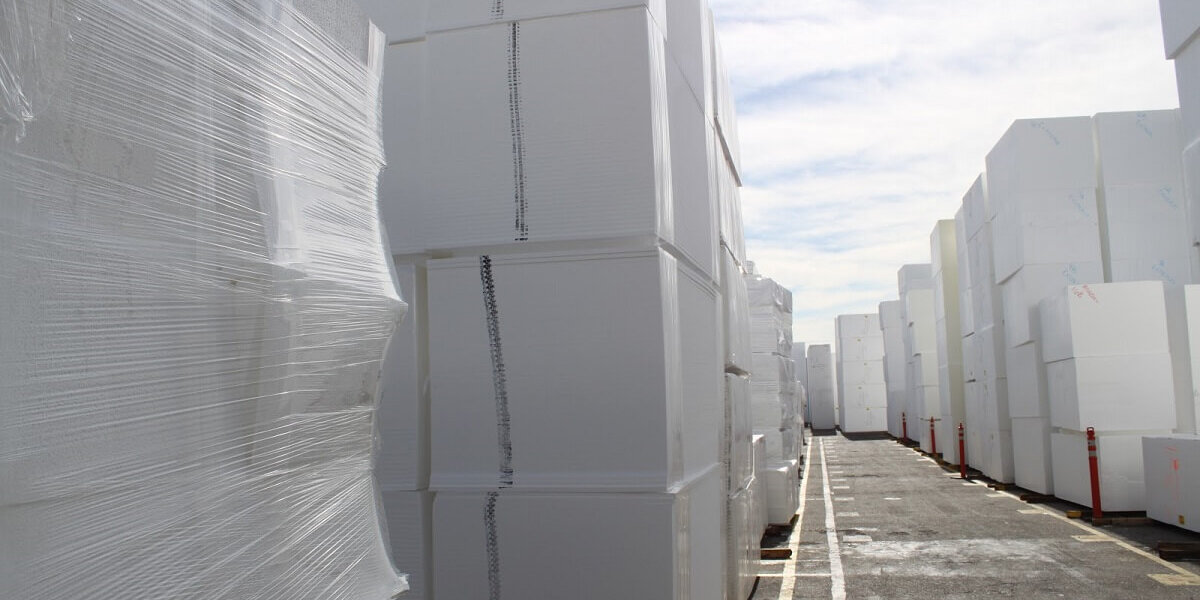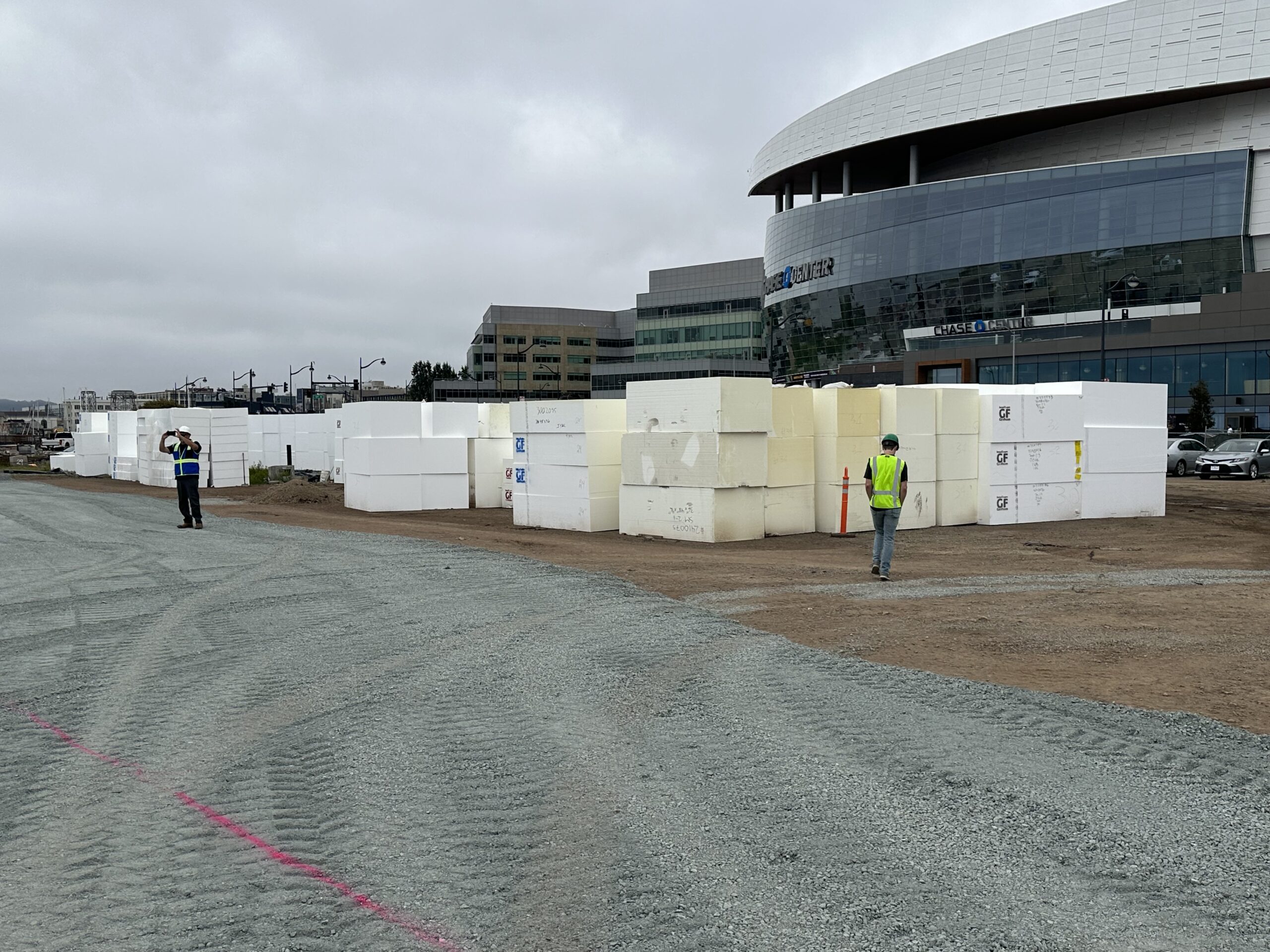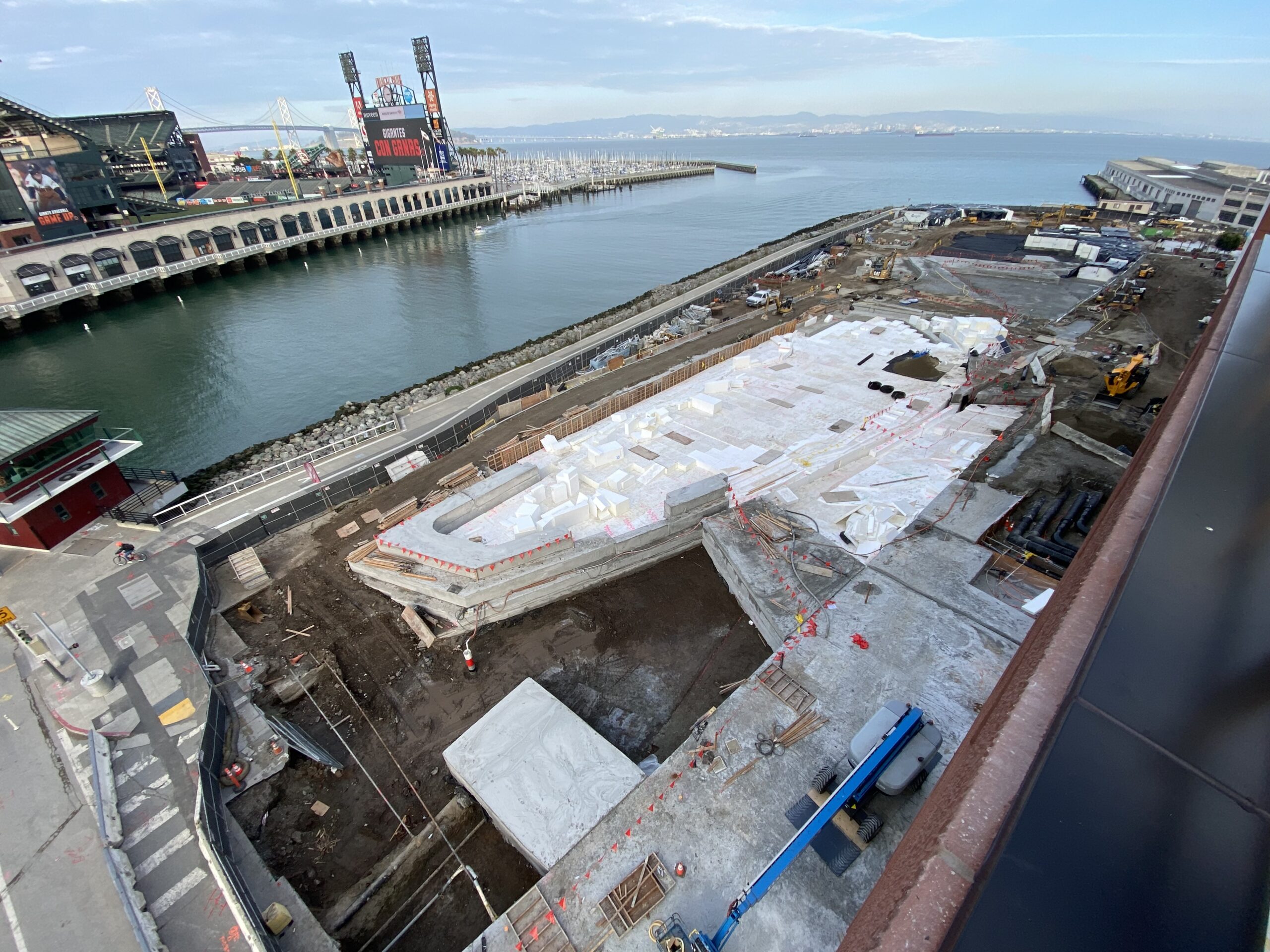All around the U.S., bridges are deteriorating. Currently, we have about 615,000 bridges nationwide, and more than 54,000 of those are structurally deficient, requiring repair, rehabilitation or replacement. Unfortunately, conventional methods of bridge construction aren’t going to solve the problems associated with our national infrastructure crisis.
It will take an unconventional approach using innovative techniques and materials to help deal with the situation quickly, efficiently and in a cost-effective way. That’s where the many benefits of EPS geofoam come into play.
Here’s how EPS geofoam can help you solve five common issues in bridge construction:
#1. Seasonal Temperature and Associated Changes in Bridge Length
Seasonal temperature fluctuations can create changes in the dimensions of bridges. That’s one reason conventional bridge construction designs used expansion joints. Expansion joints accommodate the changes in bridge length. But that method of building bridges is no longer practical. Integral abutment bridges, designed for accelerated building construction (ABC), don’t have expansion joints. So, changes in the temperature and the length of the deck are reflected on the bridge abutments.
When the temperature rises in the hot summer months, the bridge deck will expand, pushing the abutments toward the retained approach soil. This increases the lateral (horizontal) pressure on the abutment by the backfill. Eventually, the increase in lateral pressure will compact the backfill soil. During the frigid temperatures of winter, the bridge will contract, displacing the abutments toward the bridge deck. When that happens, some soil will slide into the gap created by the displacement of the abutments. The next time the temperature rises, that soil will block the abutment from returning to its original position.
As this cycle repeats over the years, the build-up of increased lateral pressure could lead to stress ratcheting, compaction of the retained backfill soil and possibly result in abutment failure. Even a small amount of abutment displacement of a few tens of millimeters can lead to significant long-term structural and geotechnical problems down the road.
Using EPS geofoam as backfill can help solve these problems. Its comprehensive resistance at 1% deformation ranges from 2.2 psi to 18.6 psi. And, its high compressive strengths of up to 60 psi make it able to absorb the wall displacement and dissipate lateral pressures.
#2. Back-Soil Densification and Aggravated Settlement
The cyclic movement of a bridge abutment towards the retained soil and then away from the retained soil increases lateral pressure. That often leads to permanent soil densification (compaction) as well as settlement of the ground surface adjacent to the abutments. Historically, this has always been an issue with bridges. It’s also an issue that impacts newer methods of bridge construction, such as integral abutment bridges.
Incorporating EPS geofoam to improve the approach to Norway’s Flom Bridge in 1972 was the first time EPS geofoam was used as a remedy for soil settlement control. Since then, EPS geofoam has been used all over the globe to solve issues with back-soil densification and settlement.
The first integral abutment bridge in the U.S. to include EPS geofoam, specifically to mitigate settlement and lateral pressure issues in bridge approaches, was built on Jackson River in Virginia. Data collected from 1999 through 2004 showed minimal settlement at the approach soil.
EPS geofoam is both strong (up to 60 psi) and lightweight – only 1% the weight of soil and less than 10% the weight of other lightweight traditional fills. It can significantly reduce the stress on underlying subgrades. Since it adds little additional load, the soil underneath the bridge abutments is barely impacted. Unlike natural materials, EPS geofoam also exhibits consistent, predictable behavior and is not affected by the freeze-thaw cycle or moisture. All of those properties make it an excellent backfill material.
#3. Failing Bridge Foundations
The foundation of a bridge supports the entire structure. And the bridge superstructure is only as strong as what supports it. In many cases the foundation for the bridge is piers, bents, which are similar to piers, or piles. Piers, columns constructed between the bridge abutments, support the load of the bridge superstructure by transferring the load to the subsoil underneath the bridge. Piles are long poles inserted into the soft soil underneath the bridge until they reach compacted soil that can support the bridge. Traditional foundation materials are concrete, reinforced concrete, stone masonry, timber or steel. Deep foundations can be damaged by collisions with land or sea vehicles, differential settlement, corrosion, material deterioration, and natural disasters such as floods or earthquakes.
In particular, differential settlement, or uneven settlement of the foundation, can cause serious problems for bridge superstructures. Most people are familiar with the use of EPS geofoam for bridge abutments, but EPS geofoam can also be used to replace piers, bents or piles in some bridge construction. In other words, the entire bridge superstructure can rest on EPS geofoam. This method is especially useful when surrounding soils are soft and more disposed to differential settlement, which can cause rotational movement (tipping) and lateral movement in other types of foundations.
The combination of being extremely lightweight, yet very strong means EPS geofoam can support the bridge superstructure while keeping settlement to a minimum. That makes EPS an excellent support option.
The bridge in Oatka Creek in Warsaw, New York, proves that point. The existing steel-girder bridge on spread footing was replaced by a composite concrete deck and prestressed concrete box beams. Instead of using piles, the underlying soil was excavated and replaced with EPS geofoam to provide a compensated foundation system. In 2012, after 10 years of service, the bridge constructed using EPS geofoam foundation continued to receive the highest NYSDOT bridge performance rating.
#4. Issues with Post-Construction Maintenance and the Resulting High Costs
According to a 2020 report by the American Society of Civil Engineers (ASCE), our aging infrastructure rates only a D+ when it comes to maintenance. To further complicate the issue, the ASCE estimates that between 2016 and 2025, the U.S. will underinvest in its infrastructure to the tune of more than $2 trillion! And that means less maintenance and more deterioration.
Conventional reinforced concrete is the material used for the majority of U.S. bridges and bridge abutments. And, most concrete bridges and abutments require repair within the first 11 to 20 years of their service lives. But repair failure rates run incredibly high for concrete substructures, such as abutments, with only 50% of these concrete repairs being successful. The success rate for concrete surface repair is even worse, with only a 45% success rate. And the construction cost for those botched and repeated repairs add up!
Thanks to all the advantages EPS geofoam brings to the table, it is being used more frequently as the No. 1 building material for bridge abutments. One of those advantages is that EPS geofoam can help eliminate the need for many costly repairs. EPS geofoam has a high compressive resistance rate which makes it the ideal material for supporting oncoming traffic and the repeated stress and compression that takes place on bridges. And, its high compressive strength makes it able to stand up to harsh conditions without deterioration, which minimizes maintenance.
Since EPS geofoam is so lightweight and adds little additional load, the reinforced soil underneath the bridge abutments is hardly impacted, resulting in a longer-lasting foundation for the bridge. EPS geofoam also has a low density which ranges from 15 to 22 kg/m3 – only about 1 to 2% the density of soil, rock and other traditional earth materials. That gives EPS geofoam blocks an advantage when it comes to reducing stress on underlying subgrades. And reduced stress means fewer repairs.
Norway pioneered the use of EPS geofoam to accelerate bridge construction and repair. Between 1971 and 1991, Norway used EPS geofoam in 120 projects, including bridge approach fill. After years in service, the performance records and durability evaluations show that the projects using EPS geofoam continued to perform as expected with lower maintenance issues than bridges built with conventional construction.
#5. Longevity Issues
According to the Non-Destructive Testing (NDT) Resource Center, the average life span of highway bridges is about 70 years. But significant environmental damage typically requires the average bridge to be in need of repair before it reaches midlife.
Bridges can fail for a multitude of reasons. Some of the most common ones include, flood-related damage, collision accidents by land and sea vehicles, design flaws, manufacturing errors, fires, wear-and-tear of components and earthquakes. Finally, bridges can fail from a combination of factors that in and of themselves are not necessarily fatal. We’ve all heard of the straw that broke the camel’s back! It’s the same kind of logic.
Generally, bridges are often placed in environments where soil, moisture and other natural elements can wreak havoc with their supporting structures. EPS geofoam resists these potentially damaging elements. Its high compressive strength makes it durable and long-lasting, and EPS geofoam won’t break down. It won’t rot, deteriorate under normal conditions, decompose over time or erode like soil or rock. In addition, its closed-cell structure (98% air) doesn’t readily absorb moisture. Instead, it inhibits moisture intrusion.
With a lifespan of 100-plus years, EPS geofoam will be around supporting any project for a long time to come!







